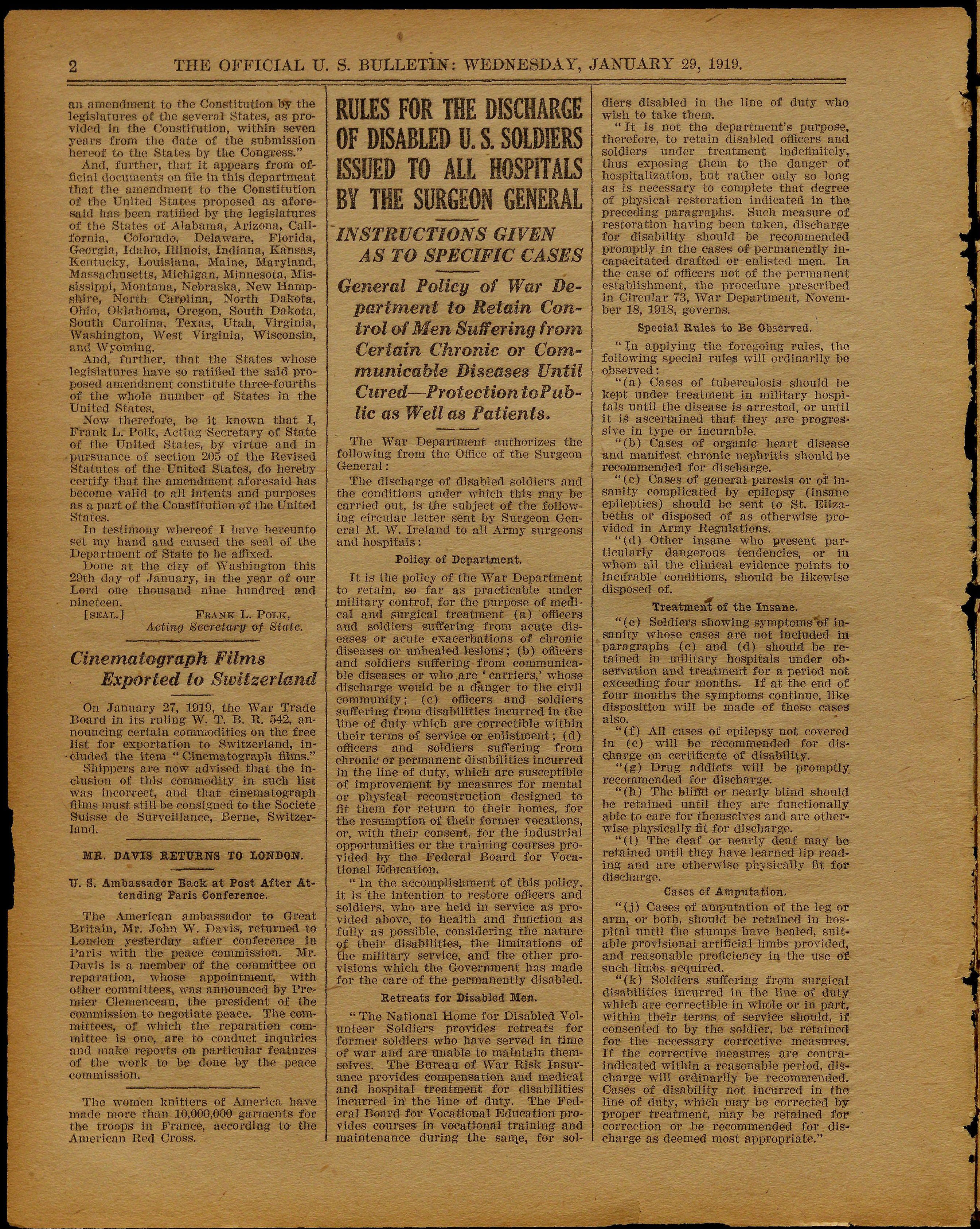Rules for discharging disabled veterans, 1919
A Spotlight on a Primary Source by the US Official Bulletin
 When World War I ended in 1918 more than 4.6 million men returned to the United States from war. The American people and the US government were unprepared to reintegrate and care for the men who returned with physical injuries and psychological damage that would affect many of the veterans for the rest of their lives.
When World War I ended in 1918 more than 4.6 million men returned to the United States from war. The American people and the US government were unprepared to reintegrate and care for the men who returned with physical injuries and psychological damage that would affect many of the veterans for the rest of their lives.
According to the Library of Congress, 224,000 soldiers returned home with a permanent physical or mental disability. Of the injured, 4,400 were amputees. Almost 100,000 soldiers had been removed from combat due to psychological injuries and 40,000 of them were subsequently discharged.[1] With no government agency dedicated to veteran’s affairs at the time, responsibilities for veterans were scattered between several agencies. On January 29, 1919, “Rules for the Discharge of Disabled US Soldiers” were issued by the US War Department and the Office of the Surgeon General and published in the Official US Bulletin.
Despite the nation’s good intentions, disabled veterans were overwhelmed with confusing paperwork to fill out. Many WWI veterans faced unemployment, poor housing conditions, and inadequate medical care. As a result, veterans and other Americans founded organizations like the Disabled American Veterans of the World War and the American Legion to support and fight for the rights of disabled veterans. Their efforts led Congress to establish the US Veterans Bureau in 1921, which was a precursor to the Department of Veterans Affairs.
Excerpt
[“]It is the policy of the War Department to retain, so far as practicable under military control, for the purpose of medical and surgical treatment (a) officers and soldiers suffering from acute diseases or acute exacerbations of chronic diseases or unhealed lesions; (b) officers and soldiers suffering from communicable diseases or who are “carriers,” whose discharge would be a danger to the civil community; (c) officers and soldiers suffering from disabilities incurred in the line of duty which are correctible within their terms of service or enlistment; (d) officers and soldiers suffering from chronic or permanent disabilities incurred in the line of duty, which are susceptible of improvement by measures for mental or physical reconstruction designed to fit them for return to their homes, for the resumption of their former vocations, or, with their consent, for the industrial opportunities or the training courses provided by the Federal Board for Vocational Education.
“In the accomplishment of this policy, it is the intention to restore officers and soldiers, who are held in service as provided above, to health and function as fully as possible, considering the nature of their disabilities, the limitations of the military service, and other provisions which the Government has made for the care of the permanently disabled.”
A full transcript is available here.
[1] Ryan Reft, “World War I: Injured Veterans and the Disability Rights Movement,” Library of Congress Blog, December 21, 2017, https://blogs.loc.gov/loc/2017/12/world-war-i-injured-veterans-and-the-disability-rights-movement/
